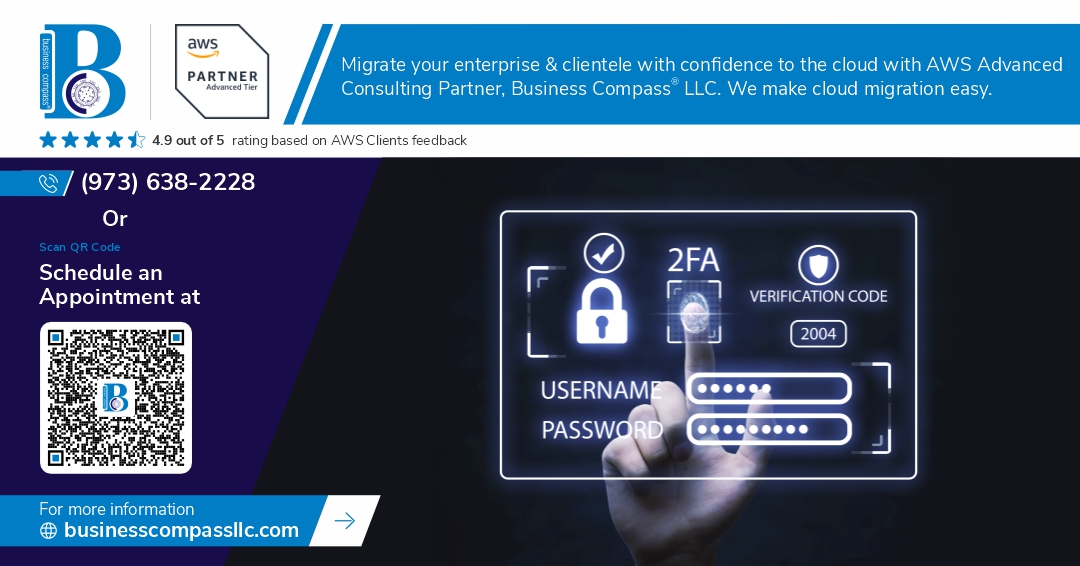In today’s digital landscape, juggling multiple login credentials for various apps and websites has become a frustrating norm. 🔑😫 But what if there was a way to simplify this process, enhancing user experience while maintaining robust security? Enter Single Sign-On (SSO) – the game-changing solution that’s revolutionizing how we access our favorite platforms.
Imagine logging into your work computer and automatically gaining access to all your company’s web applications. Or picture using your Google account to effortlessly sign in to countless third-party services. That’s the power of SSO in action. As businesses and developers increasingly adopt this technology, understanding its best practices and implementation across web and mobile apps has never been more crucial. From tech giants like Google and Apple to social media powerhouses like Facebook and Twitter, the landscape of social identity providers is vast and varied. 🌐💻📱
In this comprehensive guide, we’ll dive deep into the world of SSO, exploring its intricacies and unveiling the secrets to successful implementation. We’ll cover everything from understanding the basics of SSO and popular social identity providers to best practices, practical implementation strategies for both web and mobile apps, and tips for overcoming common challenges. So, whether you’re a seasoned developer or a curious business owner, buckle up as we embark on this journey to master the art of Single Sign-On!
Understanding Single Sign-On (SSO)
A. Definition and benefits of SSO
Single Sign-On (SSO) is an authentication method that allows users to access multiple applications or services with a single set of login credentials. This streamlined approach offers numerous benefits for both users and organizations:
- Improved User Experience: Users only need to remember one set of credentials
- Enhanced Security: Reduces the risk of weak or reused passwords
- Increased Productivity: Less time spent on login processes
- Simplified IT Management: Centralized user access control
Here’s a comparison of traditional login vs. SSO:
| Aspect | Traditional Login | Single Sign-On |
|---|---|---|
| Credentials | Multiple sets | One set |
| Password fatigue | High | Low |
| Security risk | Higher | Lower |
| User satisfaction | Lower | Higher |
B. How SSO improves user experience
SSO significantly enhances the user experience by:
- Reducing login friction
- Eliminating the need to remember multiple passwords
- Providing seamless access across various platforms
- Enabling quick onboarding for new applications
C. Security advantages of SSO implementation
Implementing SSO offers several security benefits:
- Centralized authentication control
- Reduced attack surface
- Easier implementation of multi-factor authentication
- Improved password policies and enforcement
By leveraging social identity providers, organizations can further enhance security through:
- Robust identity verification processes
- Advanced fraud detection mechanisms
- Regular security updates from established providers
Now that we understand the fundamentals of SSO, let’s explore the popular social identity providers that can be integrated into your web and mobile applications.
Popular Social Identity Providers
A. Google SSO integration
Google’s Single Sign-On (SSO) integration is one of the most popular and widely used social identity providers. It offers a seamless authentication experience for users across various platforms.
Key features of Google SSO:
- OAuth 2.0 and OpenID Connect protocols
- Robust security measures
- Cross-platform compatibility
- Access to Google user data (with permissions)
To implement Google SSO, follow these steps:
- Set up a Google Cloud project
- Configure OAuth consent screen
- Create OAuth 2.0 client credentials
- Integrate Google Sign-In SDK
| Pros | Cons |
|---|---|
| Wide user base | Dependency on Google services |
| Easy implementation | Potential privacy concerns |
| Reliable and secure | Limited customization options |
B. Apple Sign-In implementation
Apple Sign-In has gained popularity, especially for iOS applications. It provides a privacy-focused authentication option for users.
Key aspects of Apple Sign-In:
- Privacy-centric approach
- Mandatory for iOS apps with social logins
- Support for web and Android platforms
Implementation steps:
- Register your app with Apple
- Configure Sign in with Apple capability
- Implement authentication flow
- Handle user data securely
| Feature | Description |
|---|---|
| Private email relay | Masks user’s email address |
| No tracking | Ensures user privacy |
| Two-factor authentication | Enhanced security |
Now that we’ve covered Google and Apple SSO options, let’s explore Microsoft Azure AD authentication, which is particularly useful for enterprise applications.
Best Practices for SSO Implementation
Choosing the right identity provider
When implementing SSO, selecting the appropriate identity provider is crucial. Consider factors such as user base demographics, security features, and integration ease. Here’s a comparison of popular social identity providers:
| Provider | Pros | Cons |
|---|---|---|
| Wide user base, robust security | Limited customization | |
| Apple | Privacy-focused, built-in for iOS | Smaller user base |
| Microsoft | Enterprise-friendly, Azure AD integration | Complex setup for non-MS ecosystems |
| Large user base, extensive social data | Privacy concerns |
Choose providers that align with your target audience and security requirements.
Ensuring data privacy and security
To maintain data privacy and security in SSO implementation:
- Use HTTPS for all communications
- Implement token encryption and validation
- Regularly update and patch SSO libraries
- Conduct security audits and penetration testing
Designing a seamless user interface
Create a user-friendly SSO experience by:
- Offering clear login options
- Minimizing steps in the authentication process
- Providing consistent branding across platforms
- Implementing responsive design for various devices
Handling multi-factor authentication
Enhance security with multi-factor authentication (MFA):
- Offer various MFA options (SMS, email, authenticator apps)
- Allow users to choose their preferred MFA method
- Implement risk-based authentication for selective MFA prompts
- Ensure MFA doesn’t disrupt the user experience
With these best practices in place, you’ll create a secure and user-friendly SSO implementation. Next, we’ll explore the specifics of implementing SSO in web applications.
Web App SSO Implementation
Backend configuration for SSO
To implement SSO in your web application, proper backend configuration is crucial. Here are the key steps:
-
Choose an SSO protocol:
- OAuth 2.0
- OpenID Connect (OIDC)
- SAML 2.0
-
Set up identity provider (IdP) integration:
- Register your application with the chosen social identity providers
- Obtain client ID and client secret
- Configure redirect URIs
-
Implement token handling:
- Verify and validate tokens
- Extract user information from tokens
- Store tokens securely
| Protocol | Pros | Cons |
|---|---|---|
| OAuth 2.0 | Wide adoption, flexible | Requires additional user info endpoint |
| OIDC | Built on OAuth 2.0, includes user info | Slightly more complex |
| SAML 2.0 | Enterprise-ready, supports metadata | XML-based, more overhead |
Frontend integration techniques
Once the backend is configured, integrate SSO into your frontend:
-
Implement SSO login buttons:
- Use official SDKs or libraries provided by identity providers
- Create custom buttons with appropriate branding
-
Handle authentication flow:
- Initiate SSO request
- Manage redirect to IdP
- Process callback and token exchange
-
Store user session:
- Use secure storage mechanisms (e.g., HTTP-only cookies)
- Implement refresh token logic for longer sessions
Handling token validation and session management
Proper token validation and session management are essential for secure SSO implementation:
-
Token validation:
- Verify token signature
- Check expiration and issuer
- Validate audience and scope
-
Session management:
- Implement secure session storage
- Use sliding expiration for better user experience
- Handle session revocation and logout
-
Security considerations:
- Implement CSRF protection
- Use HTTPS for all communications
- Regularly rotate secrets and keys
With these backend configurations, frontend integrations, and security measures in place, your web application will have a robust SSO implementation. Next, we’ll explore how to integrate SSO into mobile applications, which presents its own unique challenges and opportunities.
Mobile App SSO Integration
iOS-specific considerations
When implementing SSO for iOS apps, developers need to be aware of several key considerations:
- Apple Sign-In requirement
- App Store guidelines compliance
- iOS-specific SDKs and frameworks
Apple mandates that apps offering social login options must include Apple Sign-In. This ensures user privacy and provides a seamless experience for iOS users. Additionally, developers must adhere to App Store guidelines for authentication and data handling.
| Consideration | Description |
|---|---|
| Apple Sign-In | Mandatory for apps with social login |
| App Store Guidelines | Compliance with authentication rules |
| iOS SDKs | Utilize official SDKs for each provider |
Android implementation guidelines
For Android SSO integration, follow these guidelines:
- Use the official Google Sign-In SDK
- Implement Firebase Authentication for multiple providers
- Ensure proper handling of user tokens and permissions
Android offers flexibility in SSO implementation, but it’s crucial to follow best practices for security and user experience.
Cross-platform solutions for mobile SSO
To streamline SSO across both iOS and Android platforms:
- Utilize cross-platform frameworks like React Native or Flutter
- Implement OAuth 2.0 and OpenID Connect protocols
- Use identity management services for unified authentication
Cross-platform solutions offer consistency and reduce development time, but may require additional optimization for platform-specific features.
Now that we’ve covered mobile app SSO integration, let’s explore how to overcome common SSO challenges in the next section.
Overcoming Common SSO Challenges
Dealing with multiple identity providers
When implementing SSO with multiple identity providers, it’s crucial to create a unified experience for users while managing the complexity behind the scenes. Here’s how to effectively handle this challenge:
-
Implement a middleware layer:
- Acts as an abstraction between your application and various identity providers
- Standardizes authentication flows and data formats
- Simplifies integration and maintenance
-
Use federation protocols:
- Leverage OAuth 2.0 and OpenID Connect for consistent authentication flows
- Implement a discovery mechanism to dynamically configure identity providers
| Protocol | Purpose | Key Features |
|---|---|---|
| OAuth 2.0 | Authorization | Token-based, Scoped access |
| OpenID Connect | Authentication | ID tokens, User info endpoint |
Handling SSO failures gracefully
To ensure a smooth user experience even when SSO fails, consider the following strategies:
-
Implement fallback mechanisms:
- Offer alternative login methods (e.g., email/password)
- Provide clear error messages and guidance to users
-
Monitor and log SSO failures:
- Use monitoring tools to detect issues early
- Analyze logs to identify patterns and common failure points
-
Implement retry logic:
- Attempt SSO multiple times before failing
- Use exponential backoff to avoid overwhelming identity providers
Ensuring consistent user experience across platforms
Maintaining a uniform SSO experience across web and mobile platforms is essential for user satisfaction and trust. Here’s how to achieve this:
-
Design a unified UI/UX:
- Create consistent branding and layout for SSO flows
- Use responsive design principles for adaptability
-
Standardize data handling:
- Implement a centralized user profile management system
- Ensure consistent attribute mapping across platforms
-
Synchronize sessions:
- Use secure token storage mechanisms
- Implement single logout functionality across all platforms
By addressing these common SSO challenges, you can create a robust and user-friendly authentication system that works seamlessly across various identity providers and platforms.
Testing and Monitoring SSO Implementation
Key metrics to track for SSO performance
To ensure the effectiveness of your SSO implementation, it’s crucial to monitor specific metrics. Here are the key performance indicators (KPIs) you should track:
- Authentication Success Rate
- Login Time
- User Adoption Rate
- Error Rates
- Session Duration
| Metric | Description | Target |
|---|---|---|
| Authentication Success Rate | Percentage of successful logins | >99% |
| Login Time | Average time to complete login process | <3 seconds |
| User Adoption Rate | Percentage of users using SSO | >80% |
| Error Rates | Percentage of failed logins or errors | <1% |
| Session Duration | Average length of user sessions | Varies by app |
Tools for monitoring SSO health
Several tools can help you monitor the health and performance of your SSO implementation:
- Identity Provider Analytics: Most social identity providers offer built-in analytics dashboards.
- Application Performance Monitoring (APM) tools: NewRelic, Datadog, or AppDynamics.
- Log Management Systems: ELK Stack (Elasticsearch, Logstash, Kibana) or Splunk.
- Custom Monitoring Scripts: Develop in-house tools for specific SSO metrics.
Best practices for SSO testing and quality assurance
To ensure a robust SSO implementation, follow these testing and QA best practices:
- Conduct thorough unit testing of SSO components
- Perform integration testing with all supported identity providers
- Test edge cases and error scenarios
- Implement automated testing for continuous validation
- Simulate high-load scenarios to assess performance under stress
- Regularly conduct security audits and penetration testing
By adhering to these practices and monitoring key metrics, you can maintain a secure and efficient SSO system across your web and mobile applications.
Implementing Single Sign-On (SSO) with social identity providers offers numerous benefits for both users and developers. By following best practices and understanding the nuances of SSO implementation across web and mobile platforms, developers can create seamless authentication experiences while enhancing security and user convenience.
As the digital landscape continues to evolve, staying informed about the latest SSO trends and updates from major social identity providers is crucial. By regularly testing, monitoring, and refining your SSO implementation, you can ensure a robust and user-friendly authentication system that meets the ever-changing needs of your audience and keeps your applications secure in an increasingly interconnected world.




















